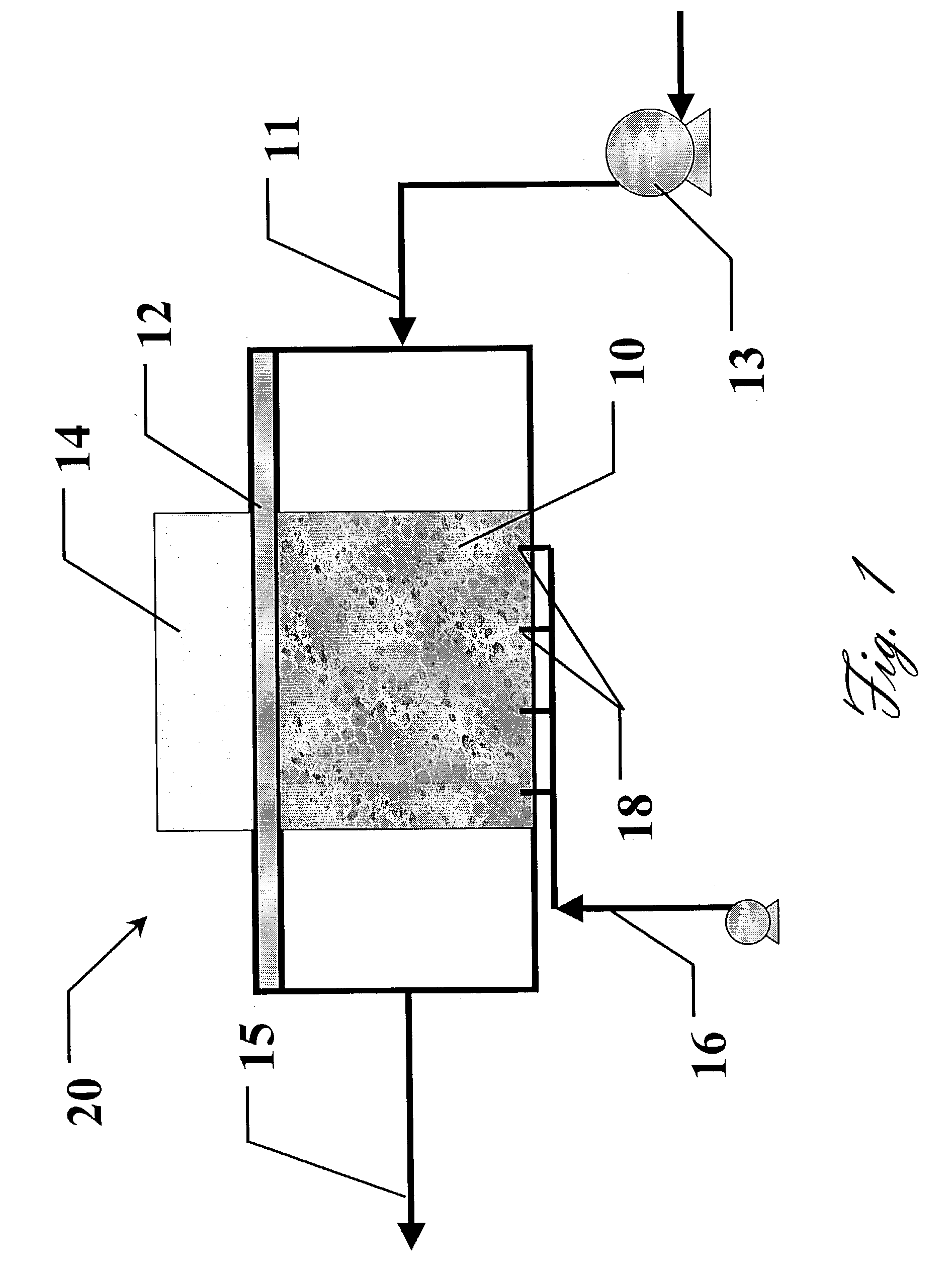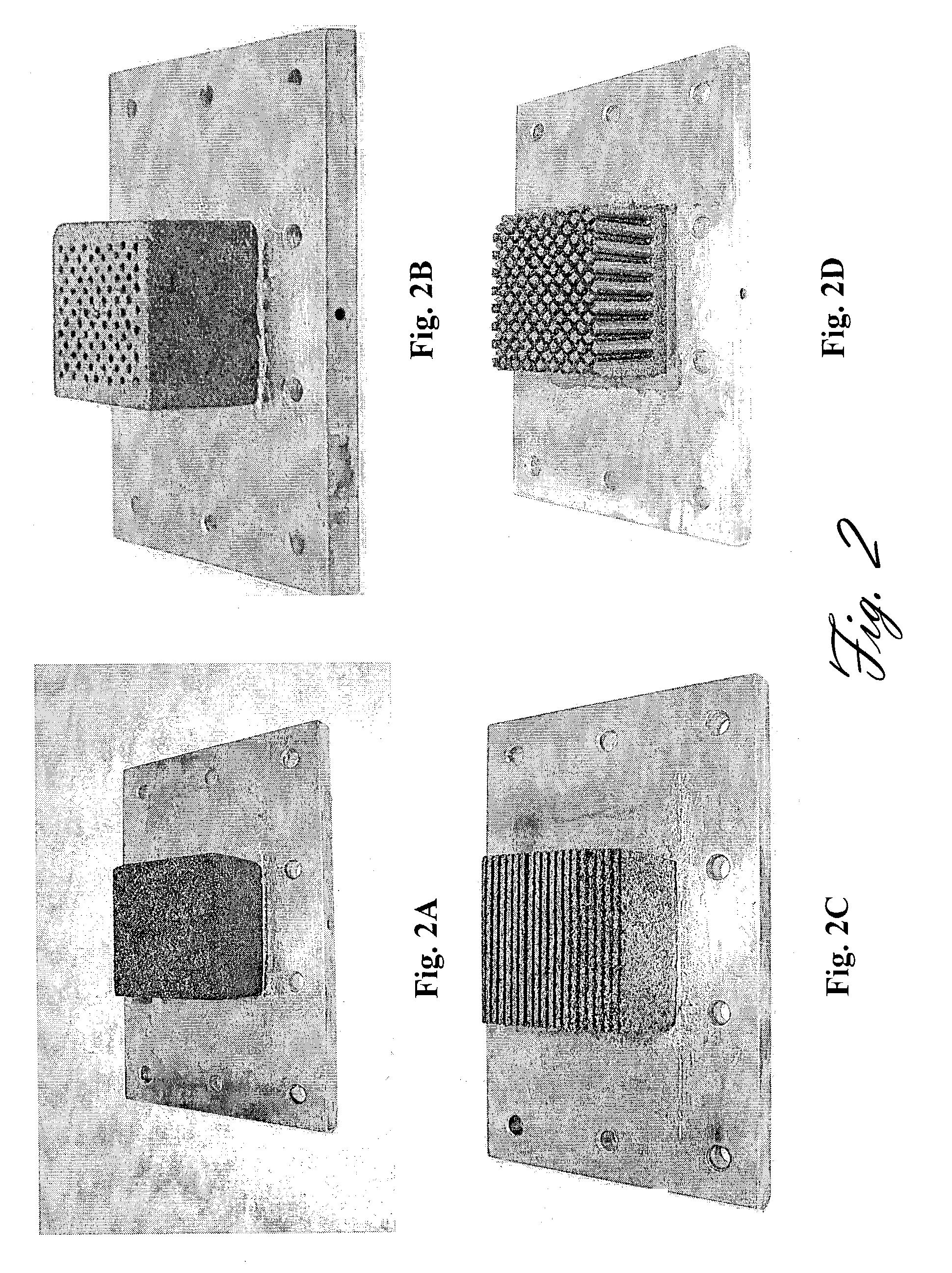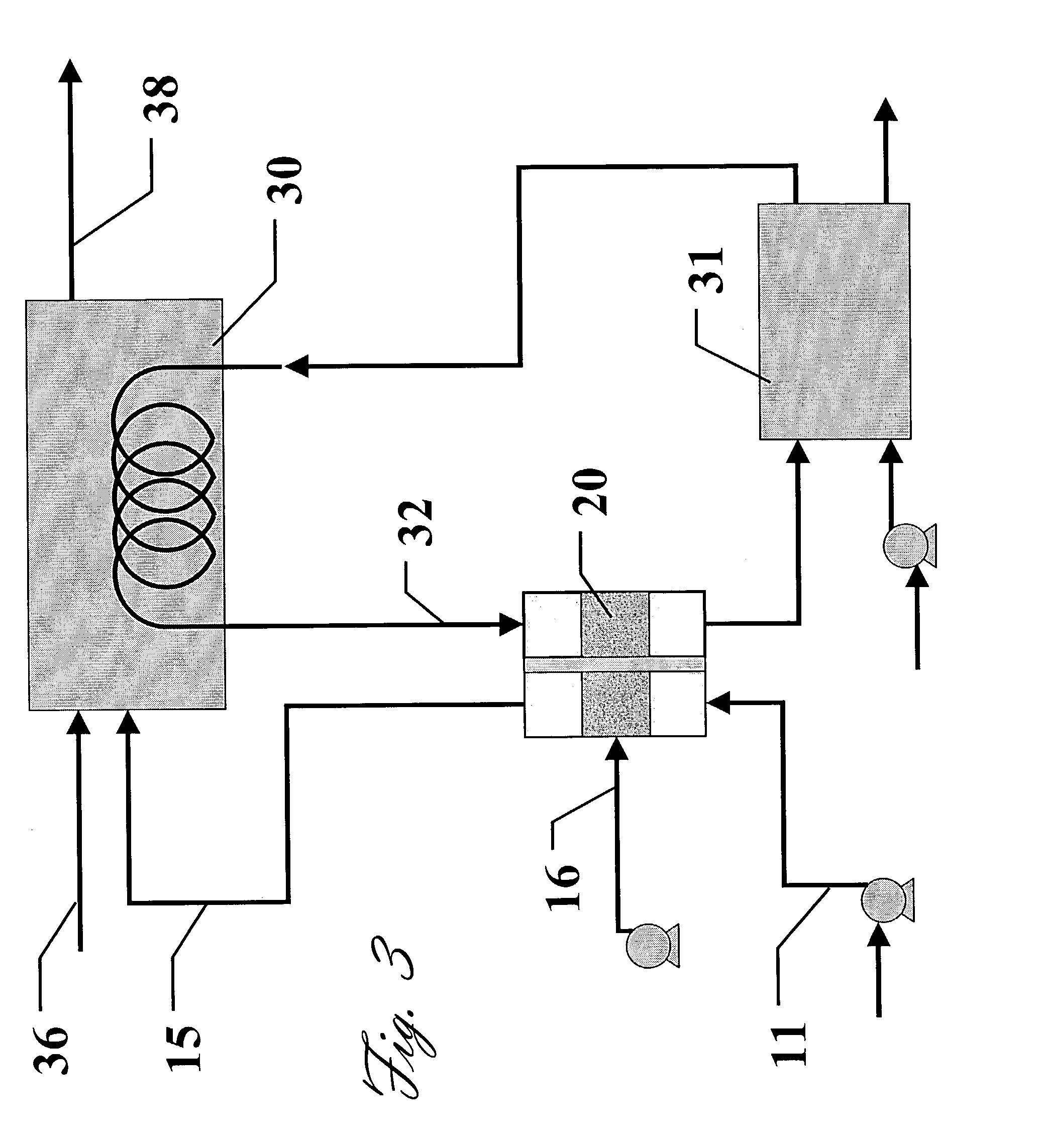Humidifier for fuel cell using high conductivity carbon foam
a high-conductivity carbon foam and fuel cell technology, applied in the direction of ceramicware, lighting and heating apparatus, separation processes, etc., can solve the problems of high loss, dramatic medium chill, high loss, etc., and achieve high conductivity, efficient heat transfer, and more surface area
- Summary
- Abstract
- Description
- Claims
- Application Information
AI Technical Summary
Benefits of technology
Problems solved by technology
Method used
Image
Examples
first embodiment
[0018]FIG. 1 illustrates the humidifier 20 in the present invention. For illustrative purposes, the heat from the onboard power electronics 14 is used as the heat source. High conductivity graphite foam 10 is attached to the surface of the spreader plate 12 opposite the power electronics 14 heat source by some means of joining. This foam is ducted in some fashion such that air can be forced through the foam structure. A water supply system 16 is used to add water to the foam at 18. If the foam is properly surface treated (i.e. oxidation at 500° C. for more than 8 hours), the water will wick up through the pores of the foam and be then evaporated as the forced dry air 11 is passed through the foam. A blower / compressor 13 is used to bring in filtered ambient air and force it through the foam. As the air is forced through the foam, the heat from the heat source 14 heats it. Concurrently, the heat from the heat source combined with the now lower humidity level of the incoming air, resul...
second embodiment
[0023]In another embodiment of the present invention, a similar design is used, but in conjunction with the cooling water of the fuel cell and the radiator (which can be made from high conductivity carbon foam itself). FIG. 3 is a schematic of the This inlet air (considered dry ambient air) 11 is passed through a similar humidifier 20 as in FIG. 1, but with the heat source being the hot cooling fluid 32 exiting the fuel cell 30. The hot cooling fluid 32 supplies enough heat for the humidification process with a similar foam structure on the fluid side (i.e. pin-fin). Depending on the inlet air humidification needs (which is dependent on the ambient humidity), the fuel cell cooling fluid will still need to be cooled further by a radiator 31. The humid fuel cell inlet air 15 is then supplied to the fuel cell 30, as needed, along with optional additional fuel 36 to enable the fuel cell energy production before leaving the fuel cell as exhaust 38. Again, as in FIG. 1, the compressor al...
PUM
| Property | Measurement | Unit |
|---|---|---|
| Thermal conductivity | aaaaa | aaaaa |
| Thermal conductivity | aaaaa | aaaaa |
| Electrical conductivity | aaaaa | aaaaa |
Abstract
Description
Claims
Application Information
 Login to View More
Login to View More - R&D
- Intellectual Property
- Life Sciences
- Materials
- Tech Scout
- Unparalleled Data Quality
- Higher Quality Content
- 60% Fewer Hallucinations
Browse by: Latest US Patents, China's latest patents, Technical Efficacy Thesaurus, Application Domain, Technology Topic, Popular Technical Reports.
© 2025 PatSnap. All rights reserved.Legal|Privacy policy|Modern Slavery Act Transparency Statement|Sitemap|About US| Contact US: help@patsnap.com



